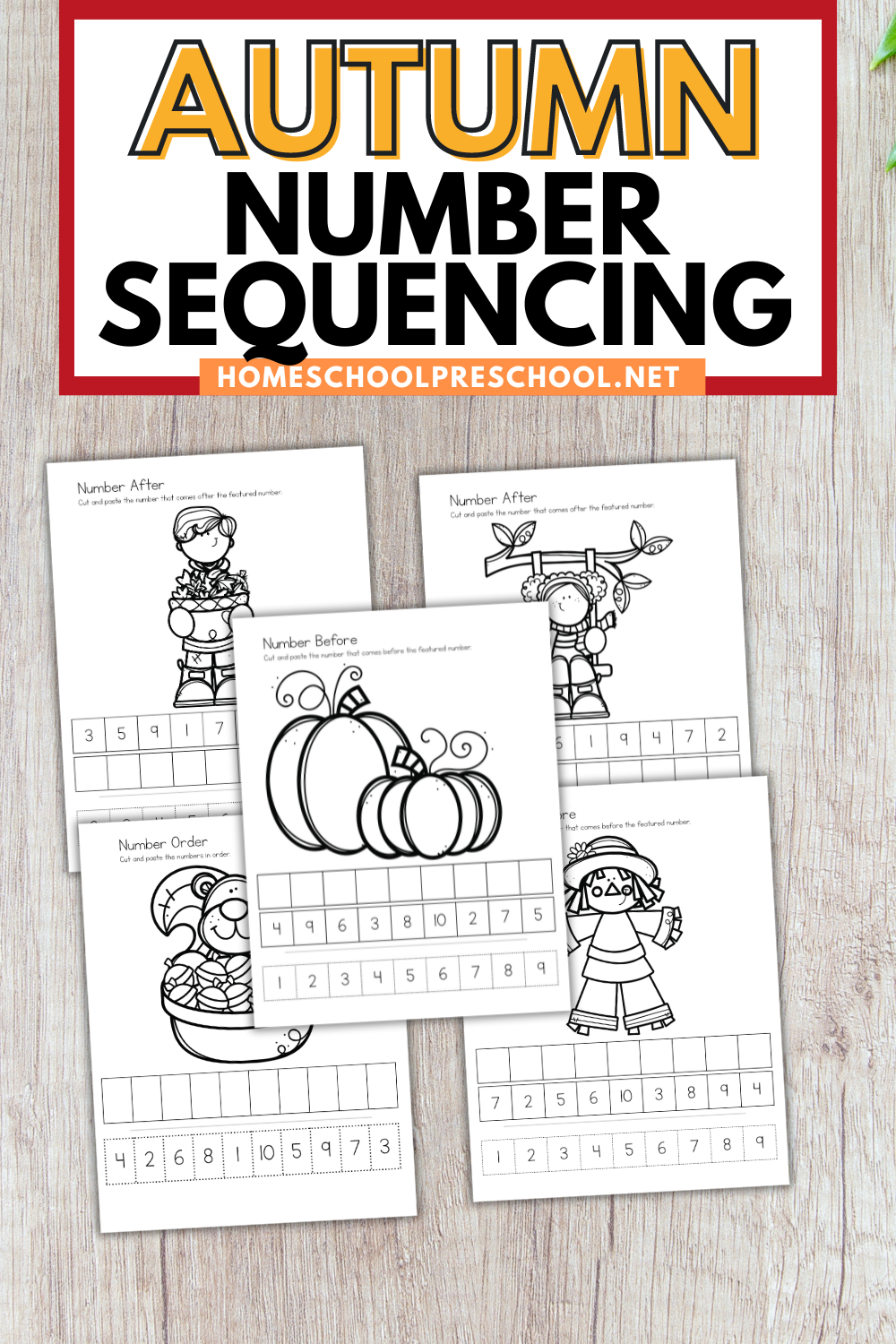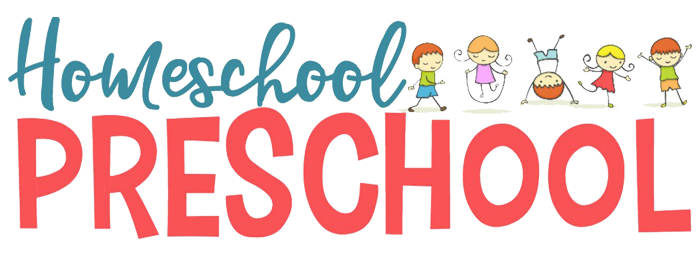Autumn Number Sequence Worksheets
These adorable autumn number sequence worksheets will help little ones order numbers 1-10 as well as the number before and after.
Teaching children how to think about sequences will help them understand math concepts better.
These free autumn printables for preschool will help kids understand number sequencing so they have a good grasp on this important math skill.
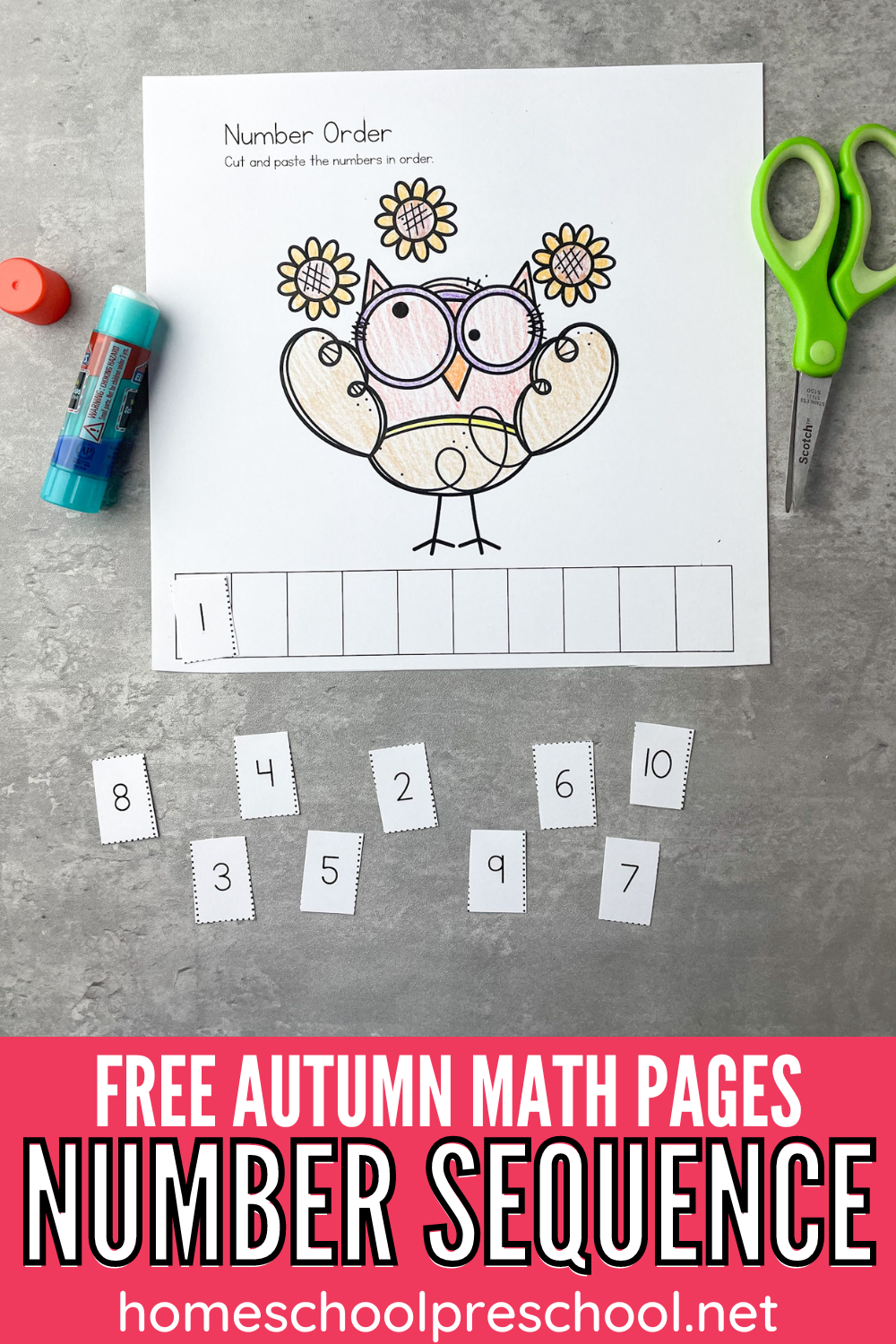
These fall printables for preschool include six pages of autumn-themed math activities geared toward kids ages 5-7.
Teaching Number Sequencing
Teaching number sequencing in preschool and kindergarten is crucial for developing mathematical understanding.
By engaging students in hands-on activities, such as arranging numbers, using rhymes and songs, integrating sequencing into daily tasks, and incorporating technology-based resources, educators can effectively teach number sequencing.
These strategies help children develop counting skills, recognize patterns, and understand the concept of order, setting them up for future math success.
Creating a supportive and interactive learning environment is key to fostering children’s exploration of number sequencing at their own pace.
By combining these approaches, educators can make learning fun and memorable while laying a strong foundation for mathematical growth in young learners.
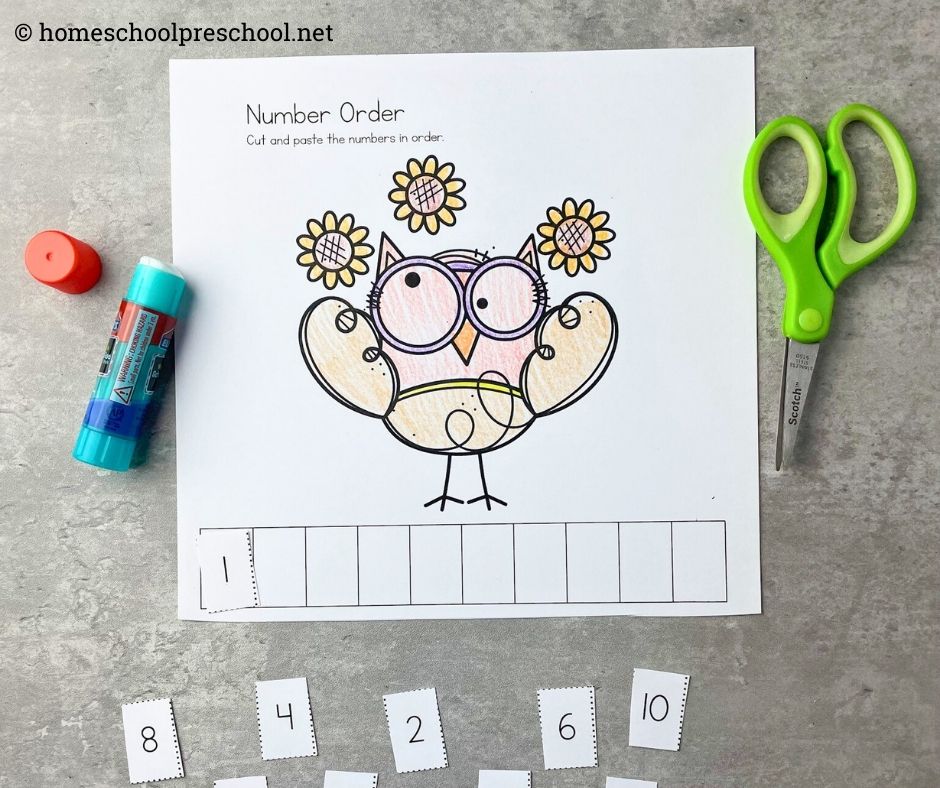
Autumn Number Sequence Worksheets
These math worksheets allow preschool and kindergarten kiddos to explore numbers and number order.
Add these autumn-themed worksheets to your fall activities and math centers.
Completing the free autumn worksheets is a great way to practice important math skills while strengthening motor skills (with scissors).
What’s in the Pack?
Number Order
There are two worksheets in this pack that focus on number order. Each page features a large autumn image for kids to color.
At the bottom of the page, kids will cut out the numbers 1-10. They’re all mixed up. Your child’s job is to put those numbers in the correct order and glue them in a row.
Number Before/After
Similar to the number order pages, the “number before” and “number after” pages feature a large picture for kids to color.
Instead of pasting numbers in order on these pages, they’ll paste the number before/after the numbers at the bottom of the page.

Number Sequences Worksheets
Number sequences worksheets are valuable resources that help students practice and reinforce their understanding of numerical patterns and order.
These worksheets provide exercises and activities that challenge students to identify, extend, and complete number sequences.
With a variety of sequencing patterns and levels of difficulty, these worksheets offer opportunities for students to sharpen their math skills and develop critical thinking abilities.
Whether used in the classroom or for homework, number sequences worksheets are an engaging tool to enhance students’ proficiency in recognizing and working with numerical patterns.

What can kids learn from this activity?
Engaging in number sequencing activities provides children with numerous learning opportunities. First and foremost, they develop their counting skills as they identify the correct order of numbers within a sequence.
Additionally, kids learn to recognize patterns and relationships between numbers, which enhances their critical thinking abilities. By identifying increasing or decreasing patterns, skip counting, or finding missing numbers, children develop problem-solving skills and logical reasoning.
Number sequencing activities also promote a strong understanding of numerical order. Children learn that numbers have a specific order and that this order is consistent.
Moreover, engaging in number sequencing activities can improve children’s memory and cognitive skills. Remembering number sequences and recalling the correct order exercises their brain, enhancing their memory capacity.
Beyond the mathematical aspects, number sequencing activities can also improve fine motor skills. Manipulating number cards or objects and placing them in the correct order requires precision and coordination, strengthening hand-eye coordination and dexterity.
From counting and pattern recognition to problem-solving and fine motor skills, these activities lay a solid foundation for mathematical understanding and foster cognitive development.
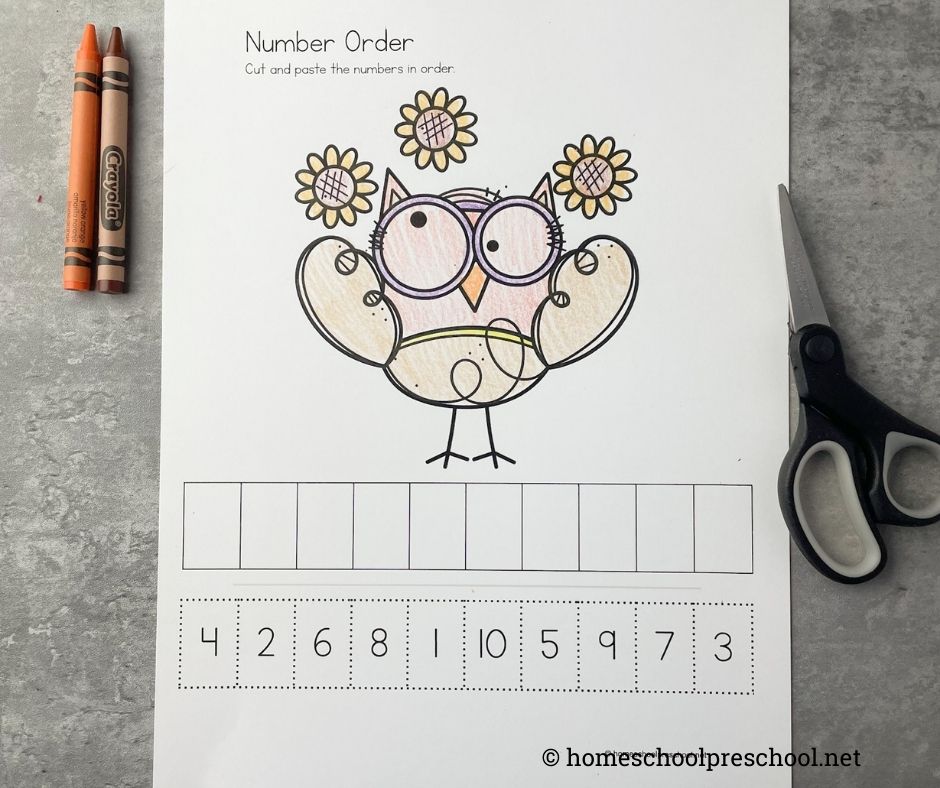
What else can I add to our preschool autumn theme?
In addition to an autumn preschool theme, you can incorporate various elements to create a rich and engaging learning experience for young children.
Here are a few ideas you can add to enhance the theme:
Songs: Sing autumn or fall songs for infants, toddlers, and preschoolers to get them in the mood for the season!
Nature Walks: Take the children on nature walks to explore the changes happening in the environment during autumn. Encourage them to observe and collect fallen leaves, acorns, pinecones, and other natural materials. These can be used for art projects, sensory play, or as props for storytelling.
Seasonal Crafts: Engage children in hands-on craft activities inspired by autumn. They can create leaf rubbings, make paper scarecrows, decorate pumpkins, or construct their own mini-autumn trees using paper and tissue rolls. These crafts promote creativity, fine motor skills, and sensory exploration.
Science Experiments: Explore the science behind autumn phenomena with simple experiments. For example, demonstrate how leaves change color by placing them in jars of water mixed with food coloring. Observe and discuss the results together. You can also investigate the concept of migration and talk about why some animals travel during this season.
Fall Sensory Bins: Create sensory bins filled with materials like dried corn kernels, colorful leaves, cinnamon sticks, and small seasonal objects. Allow children to explore and manipulate these materials, stimulating their senses and promoting language development.
Literature Connection: Introduce autumn-themed books and stories during circle time or read-aloud sessions. Choose books that celebrate the beauty of the season, highlight fall traditions, or feature animal characters preparing for winter. Reading together cultivates a love for books, expands vocabulary, and encourages listening skills.
Remember to adapt these ideas to suit the age and developmental needs of your preschoolers.
By incorporating these elements into your autumn preschool theme, you can create a holistic and immersive learning experience that nurtures children’s curiosity, creativity, and understanding of the world around them.
